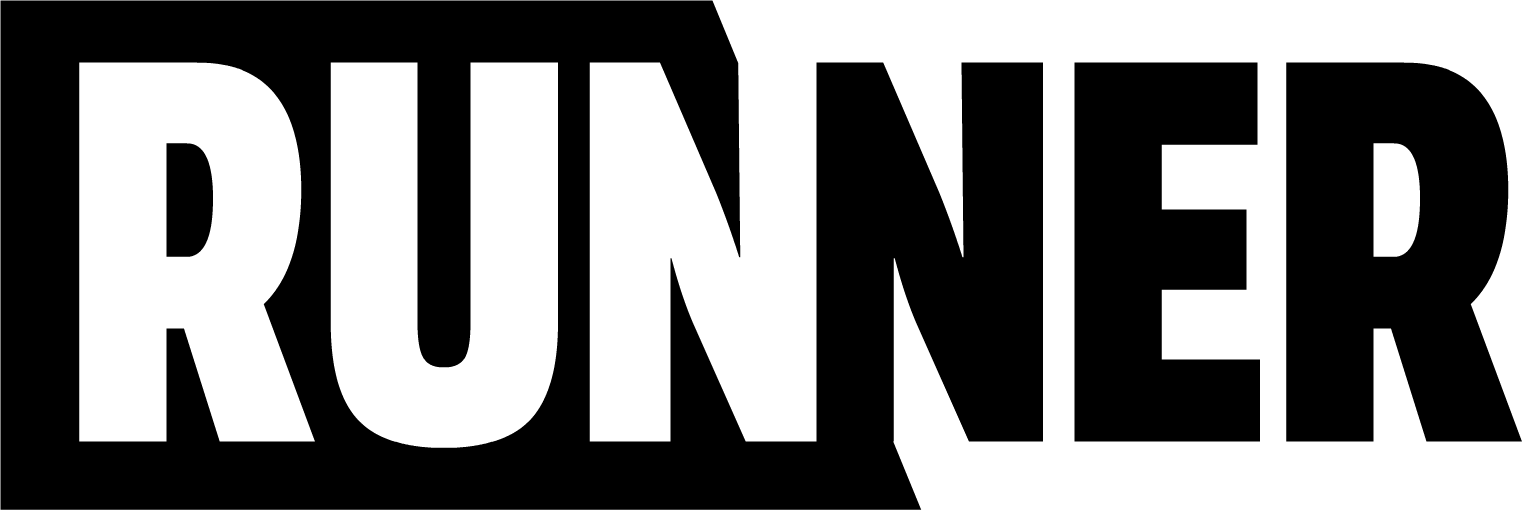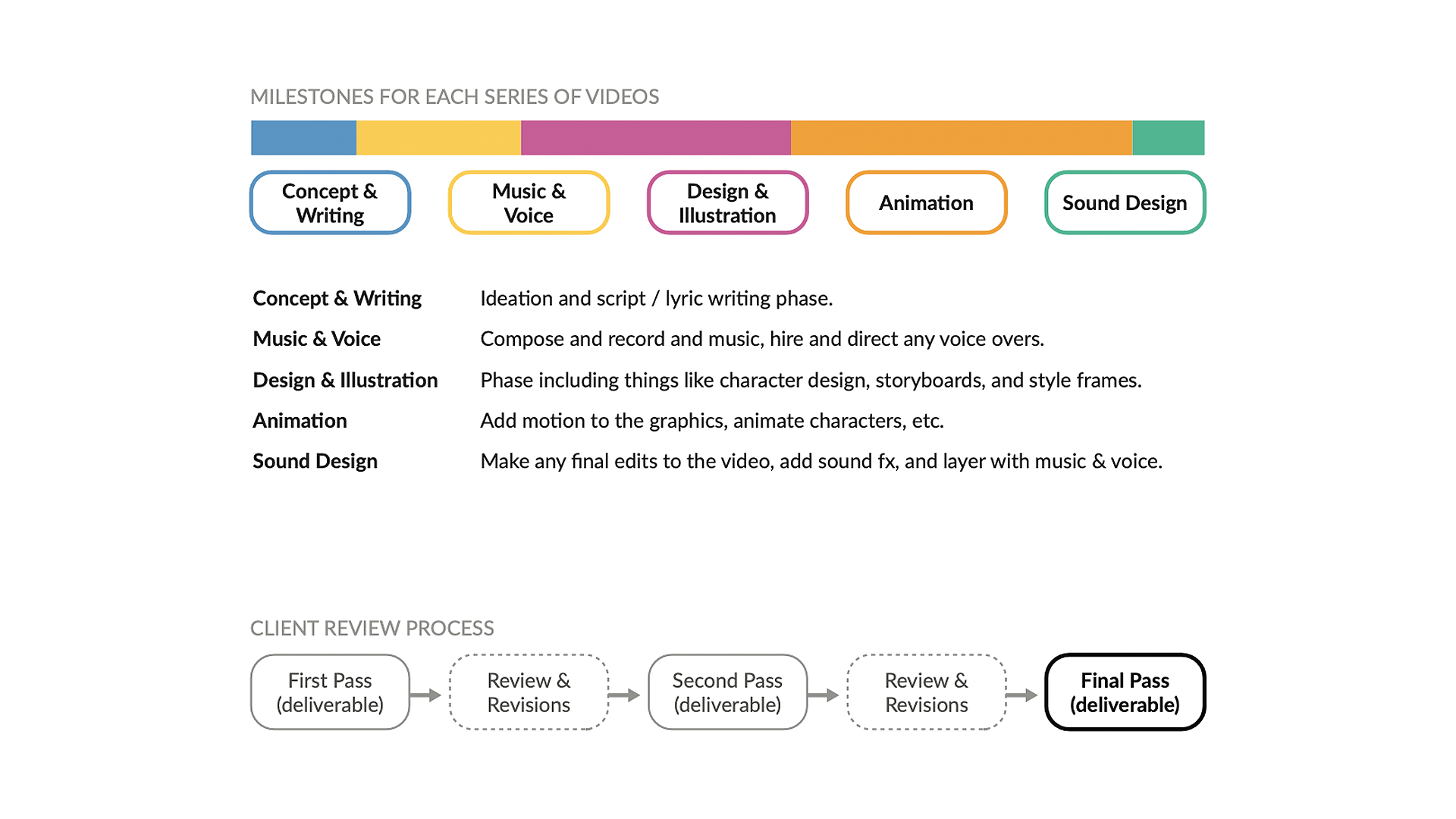
Building a B2B motion design company
Runner was a motion design studio I founded in 2016 to provide high-quality promotional and explainer videos for brands. Specializing in 2D motion graphics and narrative storytelling, Runner helped companies communicate their messages effectively through animation. Over the course of 8 years, I grew Runner from working with a single client into a full-service design and animation business that served a range of B2B clients from small businesses to global brands, focusing on scalability, creativity, and client satisfaction.
COMPANY
RUNNER
ROLE
OWNER, DESIGNER, ANIMATOR
TIMELINE
8 YEARS

Responsibilities
As the owner and primary artist, I wore multiple hats, overseeing and working on all aspects of production, from initial client engagement to final delivery. Here’s a breakdown of my responsibilities at Runner:
- Client Acquisition & Sales: Pitching and negotiating directly with clients to secure new business opportunities, preparing proposals, and managing client relationships.
- Project Management: Handling the entire project lifecycle, from client onboarding to delivering final assets. I coordinated contractors and managed timelines, budgets, and resources to ensure smooth project execution.
- Creative Direction & Production: Writing scripts, creating storyboards, designing style frames, and animating the final videos. I ensured each project adhered to the client’s vision and met high standards of design and storytelling.

Process
The process at Runner was both structured and flexible, enabling me to adapt to a variety of client needs while maintaining consistency across projects. Below is a typical workflow:
- Client Brief: The first step was always to gather as much information as possible. I worked with clients to understand their brand, goals, audience, and success metrics.
- Script Development: After reviewing the brief, I either wrote the script myself or collaborated with the client to craft a narrative around their key messages and brand voice.
- Storyboarding: Rough sketches were created to map out the sequence of animation and refine the narrative flow. This allowed clients to see the structure and pacing of their project before any design work began.
- Design & Style Frames: I designed high-fidelity style frames to showcase the look and feel of the final animation. These served as a reference for the entire team and ensured consistency in visual language.
- Animation & Motion: Once the design was locked, I brought the visuals to life through animation, smooth motion transitions, and clear visual storytelling.
- Sound Design & Final Mix: The final phase involved adding the voiceover, sound effects, and music, to complement the animation and strengthen the overall message.

Results & Impact
While the specific ROI and performance metrics were often kept proprietary by clients, the impact of Runner’s work can be understood through the relationships I built and the ongoing success of the projects. Here are some quantifiable and qualitative results:
- Project Success: While I didn’t always have direct access to specific success metrics, the recurring nature of projects and positive client reviews suggest that the videos I produced contributed to key client goals, such as increased brand awareness, improved engagement, and clearer communication of complex ideas.
- Client Satisfaction: Feedback from clients highlighted my responsiveness, ability to deliver quickly, and attention to detail. Many appreciated the streamlined process, which helped them feel informed and in control throughout the project lifecycle.
- Repeat Clients: Many clients returned for multiple projects, showcasing the value they saw in the work. This led to long-term relationships and consistent business over the years.
- Team Expansion: As the business grew, I brought on contractors for specialized roles, scaling up production and increasing quality. This allowed me to handle larger projects and a wider variety of clients.
Key Takeaways
- A Strong Process Drives Efficiency and Client Trust
Developing a clear, repeatable process was critical for ensuring client satisfaction and meeting deadlines. From onboarding to final delivery, I was able to keep projects on track and clients informed, which helped manage expectations and reduced revision cycles. Having a structured process also helped mitigate stress and improved the overall quality of the work. - Client Relationships Matter More Than You Think
Building long-term relationships with clients was just as important as the work itself. By providing excellent customer service and consistently delivering high-quality work, I earned repeat business and referrals. Cultivating trust and keeping clients engaged throughout the process helped me secure projects and grow the business in ways that wouldn’t have been possible with a more transactional approach. - Adaptability and Scalability Are Key to Growth
Starting as a solo operation and eventually scaling to manage multiple projects at once taught me the value of adaptability. As Runner’s client base grew, I had to adjust my workflow to maintain efficiency and manage larger, more complex projects. Hiring and working with contractors allowed me to scale operations without compromising quality. - Measure Success Beyond Just Financials
While I didn’t always track the direct outcomes of each project, I realized that the success of Runner wasn’t only about revenue. Positive feedback, client satisfaction, and strong referrals were key indicators of my impact. This taught me to focus more on delivering tangible value and building relationships than solely on transactional success.